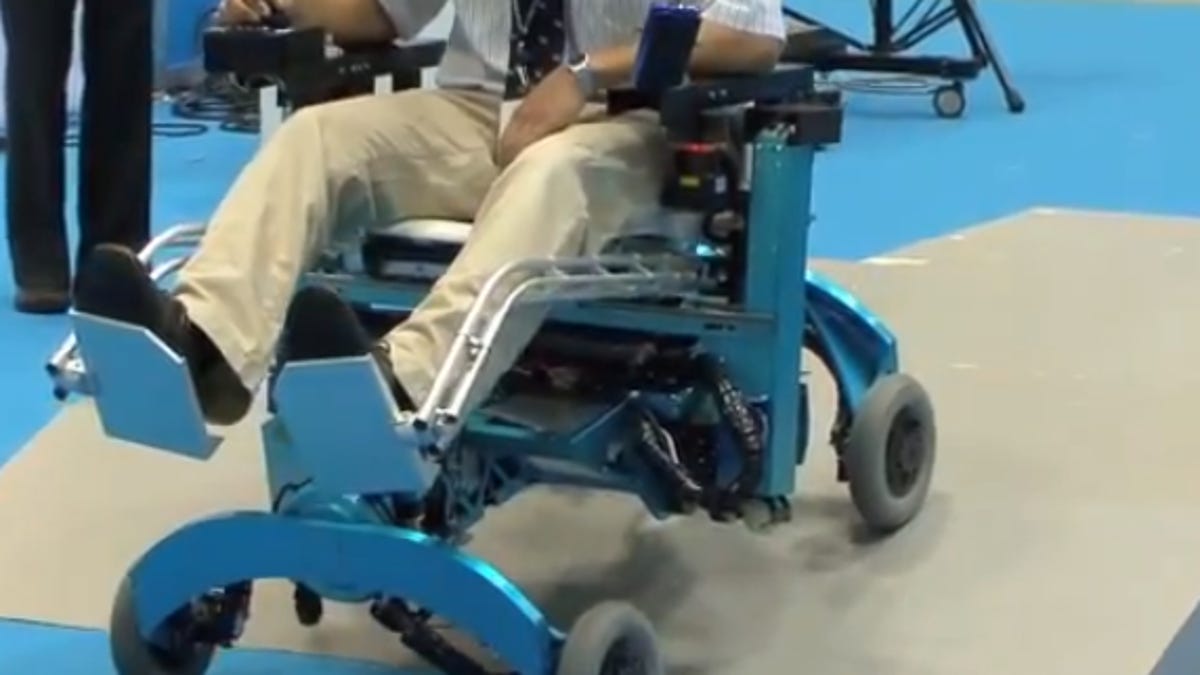Stair-climbing wheelchair turns wheels into legs
Japanese researchers roll out a sensor-packed wheelchair that can climb over obstacles and turn a circle in tight spaces.

While wheelchair design is advancing, allowing chairs to do things like move sideways and diagonally and follow the person next to them, stairs and curbs remain a formidable hurdle for all but a few models. It's an obstacle, however, that Japanese researchers are looking to overcome.
A team at Chiba Institute of Technology has rolled out a new robotic wheelchair that can climb over steps, ditches, and other roadblocks. The four-wheel-drive, five-axis vehicle maneuvers like a typical wheelchair -- except when it encounters an obstacle. Then it uses its wheels like legs.
"The robot has five sensors on its feet, to see if there's anything nearby," team leader Shuro Nakajima, a Chiba associate professor, says in the DigInfo TV video below. "It can also see how far it is from a step."
The robot's various sensors can also assess a stair's size, a step up from current stair-climbing wheelchairs that require level steps to operate.
The wheelchair user commands the direction of the device using a joystick, but the robot does the rest of the work. It can keep its seat level when it senses uneven terrain such as a bumpy lawn, and can also line up its wheels and extend stabilizers to the left and right, enabling it to turn in a circle. This maneuver makes it easy for users to reverse direction, even in narrow spaces.
Robots that can climb stairs aren't brand new. Earlier this year, we were somewhat terrified to discover that stairs and ramps could no longer save us from determined humanoid robots.
But like robotic exoskeletons that get wheelchair users up and walking, wheelchairs that can climb stairs have potentially broad and exciting implications.
While inventors including Dean Kamen of Segway fame have made significant contributions to the field of wheelchair innovation, Japan has notably produced a bulk of recent advancements.
These include the Permoveh that has rollers in its wheels to make them omnidirectional, and the ergonomically conscious Rodem electric wheelchair that resembles a scooter. A few years ago, Toyota, in collaboration with Japanese researchers, thought up a mind-controlled wheelchair.
Chiba's legged chair is currently a proof-of-concept vehicle that it says will need to undergo extensive user testing before it hits the market. Then, as with so many cutting-edge medical devices, it will at that point all come down to cost.

